Exploring the Five Types of Sprinkler Systems
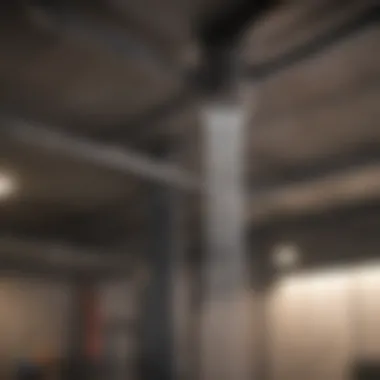
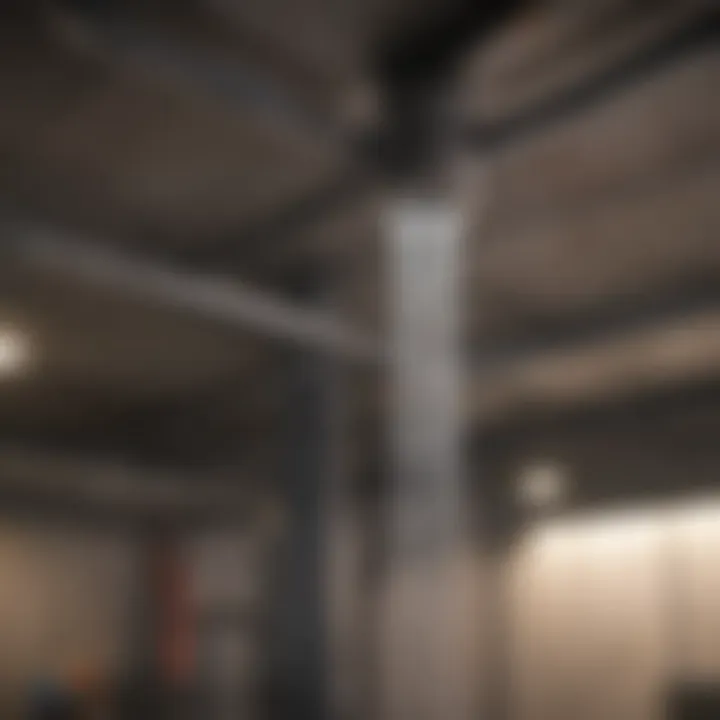
Intro
Fire safety is a critical aspect of modern construction, and sprinkler systems represent a vital component of fire protection strategies. Understanding the different types of sprinkler systems available can empower facility managers, safety professionals, and even architects to make informed decisions, shaping safer environments. The spectrum of sprinkler systems presents an array of features and applications, ensuring compatibility with various building designs and risk factors. This discussion aims not only to define and describe the five primary types of sprinkler systems but also to delve deeper into their mechanisms, advantages, and appropriate contexts for use.
Summary of Objectives
In this article, we aim to dissect five unique types of sprinkler systems, including wet pipe, dry pipe, pre-action, deluge, and mist systems. Each type carries its own distinctive characteristics, tailored to a range of fire hazards and building types. Through a structured analysis, we will highlight how these systems operate, assess their key advantages, and articulate their suitability for specific fire safety needs.
Understanding these nuances will help the audience grasp which system aligns best with their requirements, whether they are charged with protecting a large manufacturing facility or a cozy residence.
Importance of the Research
The exploration of sprinkler systems is particularly significant given the constantly evolving nature of fire safety technology. Every year, new challenges arise, from climate change influencing fire behavior to advancements in building materials affecting fire spread. Informing stakeholders about the best practices and technological advancements in sprinkler systems can save lives and properties.
"Sprinkler systems are not just about fire containment; they are about proactive safety measures that give time for evacuation and emergency response."
Thus, this comprehensive examination aims to not only educate but also encourage active engagement with modern fire protection technologies. As we progress, the article will serve as a valuable guide, providing insight into making strategic safety decisions that align with today’s fire safety demands.
Prelims to Sprinkler Systems
In a world bustling with activity and infrastructure, ensuring safety against fires is a top priority. Sprinkler systems stand at the forefront of fire protection strategies, establishing themselves as essential components in safeguarding lives and property. This article delves into the core of sprinkler systems, offering insights into their types, mechanisms, and applications. The journey will highlight both the technical nuances and the pragmatic considerations that come into play when dealing with fire prevention.
Definition and Purpose
A sprinkler system, simply put, is an assembly of piping, valves, and controls designed primarily to discharge water in a predetermined pattern during a fire incident. They operate autonomously—triggered by heat or smoke, depending on the type. While the integral purpose of these systems is straightforward—to combat fire—the manner in which they achieve this aim is anything but simple. Each type of system serves specific environments and needs.
Understanding what each type of sprinkler system brings to the table can empower building managers, architects, and safety professionals alike in selecting the right solution for their unique circumstances. Whether one is considering a wet pipe, dry pipe, pre-action, deluge, or mist system, grasping the fundamental definition of these systems sets the stage for informed decisions that can save lives and property.
Importance in Fire Safety
Fire safety is more than just a regulatory checkbox; it’s a life-saving imperative. Sprinkler systems play a pivotal role in reducing fire-related injuries and fatalities. According to various studies, the presence of a functioning sprinkler system can cut down the risk of death in a fire by quite a significant margin. This underscores how integrated fire safety measures protect not only buildings but also the individuals who inhabit these spaces.
The mechanics of a sprinkler system enable it to detect a fire almost instantaneously. This fast response can minimize damage and enhance evacuation efforts by controlling the fire’s spread. Furthermore, modern designs often include advanced technologies that integrate with alarm systems, providing a comprehensive approach to fire protection.
"Understanding fire safety through efficient sprinkler systems goes beyond technology, fostering a culture that prioritizes prevention and proactive measures in design and construction."
Ultimately, the importance of sprinkler systems lies not only in their physical presence but in their role as a crucial contributor to a robust fire safety strategy. In navigating the realm of fire prevention, familiarity with sprinkler systems can serve as an undercurrent that drives better safety practices and overarching awareness for everyone involved.
Wet Pipe Sprinkler Systems
Overview and Functionality
Wet pipe sprinkler systems are perhaps the most straightforward type of fire suppression system, featuring a network of piping filled with water. The operation is simple: when heat from a fire activates a sprinkler head, the water is released directly onto the fire. This instantaneous delivery of water significantly increases the chances of controlling or extinguishing the blaze before it has the opportunity to spread.
One can think of wet pipe systems as the first line of defense in fire safety, utilizing physics to their advantage. The pressurized water is ready to go; there's no additional delay akin to what is seen in other systems, which might rely on different types of mechanisms to release resources. Wet pipe systems are installed in ceilings, and they react without the need for external intervention, making them remarkably efficient.
Advantages of Wet Pipe Systems
The advantages of wet pipe sprinkler systems are myriad. For one, these systems are generally recognized for their reliability. Because they are always filled with water, response times are minimal—thus making them ideal for settings where seconds can mean the difference between minor damages and complete devastation.
- Cost-Effectiveness: Installation tends to be less expensive compared to other systems, mainly due to the simplicity of their design. Maintenance routines are also more straightforward, allowing for reduced overhead in long-term operations.
- Fewer Mechanical Failures: With less complexity comes fewer points of potential failure. Since the system relies on water and gravity, and not complicated mechanisms, there's typically less that can go wrong.
- Immediate Activation: The thermal sensing technology in the sprinkler heads allows for a quick response when temperatures rise, thus providing an immediate firefighting measure. This prompt action is particularly helpful in high-risk areas, as even a few extra minutes could spell disaster.
Typical Applications
Wet pipe systems are widely used across a variety of settings given their effectiveness. They are especially suitable for environments that do not experience extreme cold temperatures, as the risk of the water freezing—leading to system failures—can create significant issues. Common applications include:
- Commercial Buildings: Most shopping centers and office spaces utilize wet pipe systems due to their functionality and efficiency.
- Residential Dwellings: Many homes are outfitted with wet pipe systems, giving residents a level of safety and peace of mind while they go about their daily lives.
- Warehouses: Facilities that hold valuable inventory are prime candidates for wet pipe installation, as quick response time can save both property and assets.
In those locales, the simplicity of maintenance and ease of use make wet pipe sprinkler systems considerably popular.
Wet pipe sprinkler systems serve as the foundation of fire protection protocol, ready at all times to respond to emergencies with minimal delay.
In essence, they represent a practical balance of safety and cost-efficiency that many industrial and commercial entities have come to rely on.
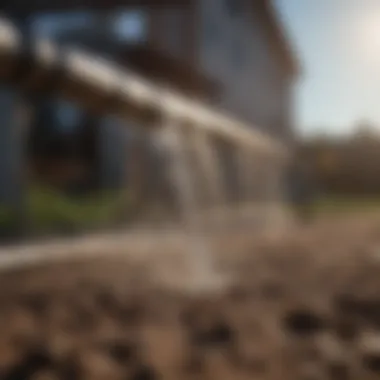
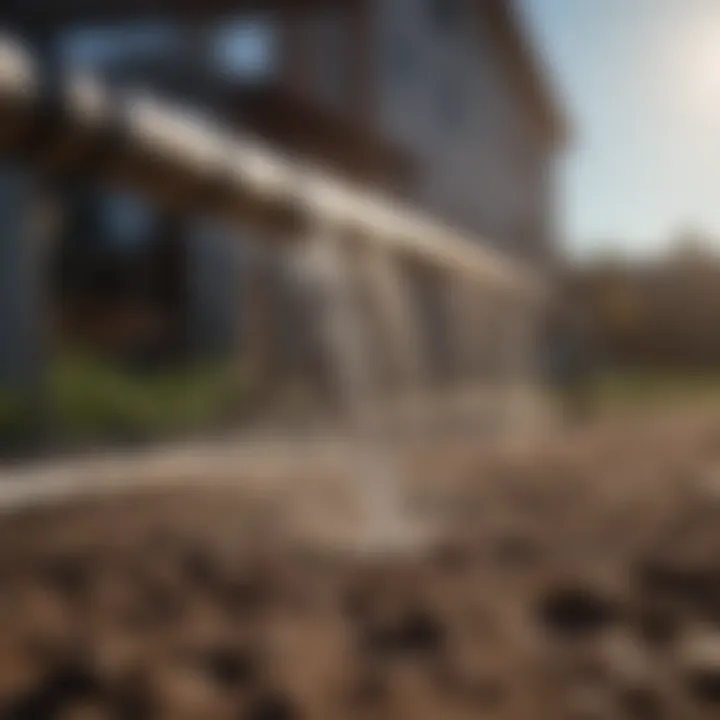
Dry Pipe Sprinkler Systems
Dry pipe sprinkler systems are essential components in modern fire protection strategies, particularly in environments where conventional wet pipe systems may not be suitable. These systems are designed to provide an effective response to fire hazards while minimizing the risk of water damage in unoccupied or frigid spaces. Unlike their wet pipe counterparts, where water is stored in the pipes ready for immediate discharge, dry pipe systems keep the pipes filled with pressurized air or nitrogen, releasing water only when a fire is detected.
Mechanism of Action
The heart of a dry pipe system lies in its ingenious operation. When a heat source activates the sprinkler head, the valve controlling the system opens, allowing water to fill the pipes and ultimately spray from the activated sprinkler heads. This mechanism provides a delayed response compared to wet systems. Here’s a quick breakdown of how it works:
- Pressurized Air: Initially, the system maintains a charge of pressurized air within the pipes.
- Activation: When a fire occurs, the heat breaks a glass bulb or fusible link in the sprinkler head.
- Valve Opening: The release of air pressure causes the dry pipe valve to open, allowing water to flow.
- Sprinkler Discharge: The water is then released through the activated sprinkler head, effectively suppressing the fire.
This efficient mechanism is particularly advantageous in climates prone to freezing temperatures, as it prevents water from being trapped in pipes where it can freeze and cause damage.
Benefits and Limitations
As with any system, dry pipe systems come with their own set of benefits and limitations. Here’s an in-depth look:
Benefits:
- Freezing Protection: The primary advantage is the protection against freezing. Suitable for garages, unheated warehouses, and other chilly environments, it eliminates the risk of burst pipes.
- Minimal Water Damage: Since water is not present in the pipes until activated by a fire, the potential for accidental water damage is significantly reduced.
- Fire Response: They still provide quick fire response capabilities, especially in high-risk areas.
Limitations:
- Longer Activation Time: The delay in water activation can be a disadvantage in situations where immediate suppression is required.
- Maintenance Needs: Regular maintenance is critical as the system relies on pressurized air, which can lose pressure over time.
- Higher Initial Costs: The installation costs can be higher compared to wet systems due to additional components like the air compressor and dry pipe valve.
Applications Suitable for Dry Pipe Systems
When considering where to implement dry pipe systems, certain environments are ideal candidates. Some common applications include:
- Cold Storage Facilities: Spaces storing frozen goods benefit greatly given the risk of water freezing in pipes.
- Parking Garages: The protection these systems offer against accidental water discharge makes them suitable for underground or unconditioned parking.
- Manufacturing Plants: Factories with large open areas can use dry pipe systems to cover overhead spaces and prevent extensive water damage from false activations.
- Historic Buildings: In older constructions where water damage may be catastrophic, dry pipe systems provide a viable alternative.
Ultimately, selecting the right fire suppression system hinges on understanding its function, benefits, and limitations. Being informed equips decision-makers with the tools needed to ensure optimal fire safety in various environments.
When it comes to fire safety, it's better to err on the side of caution than to let the flames dance uncontrolled.
Pre-Action Sprinkler Systems
Pre-action sprinkler systems blend the reliability of traditional firefighting methods with the latest advances in technology. They act as a bridge between the wet pipe and dry pipe systems and offer unique advantages that make them particularly valuable in specific contexts. For instance, these systems are particularly effective in environments where water damage must be minimized, such as art galleries or data centers. The process of understanding pre-action systems requires an examination of their operational details, advantages in specific scenarios, and common use cases.
Operational Details
Pre-action sprinkler systems are designed to operate in a two-step manner. Initially, when a fire is detected—usually through a combination of heat or smoke detectors—the system opens a valve not unlike that found in wet pipe systems, allowing water to flow into the pipes. However, unlike a wet pipe system that is always full of water, the pipes in a pre-action system remain empty until activated. This key feature is aimed at reducing accidental water discharge.
When fire detection occurs, the system still requires a second step: it must be confirmed that the fire is indeed real before releasing water. Once the system is activated, each sprinkler can operate independently, engaging only where the fire is detected.
This mechanism minimizes potential water damage while still ensuring fire suppression. As a result, the operational complexity is greater, but the precision is significantly improved.
Advantages in Specific Scenarios
The dual-action nature of pre-action systems offers significant benefits in environments where even a small amount of water could cause substantial damage. For example:
- Art Galleries and Museums: Losing a valuable painting to water damage would be catastrophic.
- IT and Data Centers: A sudden deluge could wipe out vital data and hardware, creating a need for water-sensitive protection.
- Libraries: Shelves filled with books can become irreversibly damaged under excessive moisture.
Another important consideration is the quick response time when the pre-action system is properly installed and maintained. By relying on prompt alarms to trigger a response, these systems allow for fast action to mitigate potential disasters without the risk associated with continuous water flow.
"Pre-action sprinkler systems represent a proactive approach to fire safety that addresses the delicate balance between prevention and damage control."
Common Use Cases
Various industries implement pre-action systems to safeguard valuable assets. Some notable examples include:
- Telecommunication Facilities: Given the sensitive nature of their equipment, these sites rely on pre-action systems to prevent unintentional damage.
- Cold Storage Applications: Maintaining a temperature-controlled environment is crucial, and unnecessary water can significantly impact these operations.
- Laboratories: Equipment in research settings may be sensitive to water exposure, hence the preference for pre-action systems.
By ensuring that only genuine emergencies trigger the release of water, pre-action systems effectively protect both infrastructure and valuable inventory. They symbolize a nuanced understanding of fire safety, marrying strategic prevention with responsive technology.
Deluge Sprinkler Systems


Deluge sprinkler systems play a crucial role in fire protection, particularly in facilities at a higher risk for rapid fire spread. These systems are designed to release a large volume of water over a wide area in a short amount of time, making them essential in fire scenarios where fire outbreaks can escalate quickly. Unlike traditional systems that activate based on heat detection, deluge systems rely on an open sprinkler head design, ensuring prompt delivery of water that can extinguish flames before they become uncontrollable.
System Components and Function
Deluge systems consist of several key components that work in unison to combat fires efficiently. The primary elements include:
- Deluge valve: This controlling device manages the flow of water throughout the system. When activated, it opens and allows water to flow into the network of pipes leading to the sprinkler heads.
- Sprinkler heads: Unlike standard systems that contain heat-sensitive elements, deluge sprinkler heads remain open at all times. This design enables immediate water discharge when the system is activated.
- Water supply: A dedicated water source, often higher in pressure, is crucial to providing the substantial flow required by a deluge system.
- Control panel: This monitoring device initiates the system's operation, typically triggered by an external fire detection system. It can also feature alerts and diagnostic tools for maintenance purposes.
Together, these components form a rapid-response mechanism that mitigates the risk of extensive fire damage in susceptible areas.
Situations Requiring Deluge Systems
Deluge sprinkler systems are particularly effective in specific situations, including:
- High-hazard facilities: Locations such as chemical plants, oil refineries, and power stations are prone to fires that can escalate quickly. The rapid deployment of water from a deluge system can prevent incidents from spiraling out of control.
- Storage areas: Warehouses storing flammable materials rely on these systems to safeguard against rapid fire spread, providing an additional layer of security.
- Aircraft hangars: Given the fuel and other combustible materials present, hangars implement deluge systems to protect against significant fires, enhancing overall safety.
In these environments, the capacity for immediate and substantial water coverage can mean the difference between containment and catastrophe.
Design Considerations
When designing a deluge sprinkler system, several crucial factors come into play:
- Hazard classification: Understanding the type and extent of potential fire hazards within the premises will inform the overall system design and capacity requirements.
- Water supply requirements: As deluge systems need high water flow rates, verifying the adequacy of the water supply is paramount. Consulting with local authorities or water suppliers can help in assessing this need.
- Placement of sprinkler heads: Sprinkler heads should be strategically located based on potential ignition sources, ensuring even distribution of water coverage across the facility.
- Integration with fire alarm systems: A seamless connection between the deluge system and existing fire detection apparatus strengthens the overall fire response strategy.
In summary, deluge sprinkler systems are integral to fire safety strategies in high-risk environments. Their unique design and operational mechanics allow for effective fire suppression where rapid intervention is critical.
Mist Sprinkler Systems
Mist sprinkler systems represent a significant advancement in the field of fire protection technology. The appeal of these systems lies in their ability to not only suppress flames but also lower temperatures in the vicinity of a fire. Introduced as an effective alternative to traditional methods, mist technology subtly combines precision with efficiency. This section unveils how mist systems operate, their benefits, and where they shine the most.
How Mist Systems Operate
Mist systems work by creating a fine mist of water droplets that are typically smaller than the average raindrop. When a fire breaks out, the system activates, producing these tiny water particles which quickly absorb heat and cool the air around the blaze. Unlike standard sprinkler heads that release a larger volume of water, mist systems utilize high-pressure pumps to generate the fine droplets.
The operational sequence can be broken into a few simple steps:
- Detection: When a rise in temperature is detected, the system’s sensors trigger.
- Activation: Valves open, releasing water which is pressurized through nozzles.
- Mist Creation: The water is atomized into tiny droplets, resulting in an efficient cooling effect.
- Fire Suppression: The mist not only douses flames but also leads to reduced smoke and harmful gases.
This unique operational framework allows mist systems to mitigate fires effectively while minimizing water damage which can often occur with more conventional methods.
Benefits of Using Mist Technology
Mist technology brings numerous advantages to the table that make it increasingly appealing for modern fire safety solutions. Some of these benefits include:
- Reduced Water Usage: Since the mist is designed to cover a larger area using fewer gallons of water, it decreases not just consumption but also potential water damage.
- Less Heat Release: The cooling impact of mist lowers the environmental temperature, hindering the fire's growth.
- Increased Visibility: By limiting smoke development, mist systems help maintain clearer visibility for occupants and firefighters alike.
- Versatility: They can be tailored for a variety of settings, including storage facilities, museums, and even residential homes.
- Longer Lifespan: With fewer components that are prone to corrosion and wear, mist systems often have a longer operational lifespan compared to traditional systems.
"By combining the right tools with a strategic approach, we can tackle fire hazards more effectively, ensuring both safety and preservation of property."
Ideal Environments for Mist Systems
Mist sprinkler systems find their niche in various environments, particularly those where water damage or heavy smoke are concerns. Here are some scenarios where they excel:
- Historical Buildings: Protecting delicate structures without risking significant damage is essential, and mist systems do just that.
- Warehouses: Storing valuable goods often requires a balance between firefighting measures and product preservation.
- Data Centers: With sensitive equipment at stake, it’s imperative to have a system that cools without causing excessive water exposure.
- Industrial Facilities: High-value processes that can be sensitive to water damage benefit from the finely-tuned response of mist systems.
The adoption of mist sprinkler technology marks a shift towards more effective and economical fire protection methods, tailored to meet the diverse needs of modern public safety strategy.
Critical Factors in Choosing the Right Sprinkler System
When it comes to fire prevention, selecting the right sprinkler system is as crucial as knowing how to implement it. Each type of sprinkler system mentioned earlier serves distinct purposes, and understanding the nuances between them helps individuals and organizations protect their assets and occupants effectively. The selection process involves several considerations that can make or break the efficacy of fire safety measures. This section dives into the key factors one must ponder while choosing the appropriate sprinkler system.
Environmental Considerations
The environment in which the sprinkler system will be deployed is a fundamental determinant in the selection process. Different systems operate more efficiently under varying conditions. For instance, think about whether the area is prone to freezing temperatures.
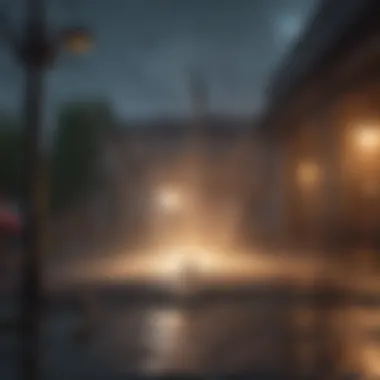

- Wet Pipe Systems may not be the best choice in regions where water could freeze within the pipes, as this could cause them to burst, leading to catastrophic failures.
- Dry Pipe Systems, tailored to combat the effects of low temperatures, have air-filled pipes that release water only when a fire triggers the sprinkler.
Additionally, humidity levels and the presence of corrosive substances in the environment can also impact the system's longevity and functionality. Facilities, for example, that deal with chemicals should consider options that minimize corrosion potential, like those made from stainless steel rather than standard materials.
Building Structure and Occupant Safety
How a building is designed plays a pivotal role in deciding the right sprinkler system. Structures with multiple floors or unique layouts may require specialized systems. For example:
- Pre-Action Sprinkler Systems may be most suitable in environments such as data centers where preventing water damage while maintaining fire safety protocols is essential.
- Deluge Systems, characterized by their ability to release large amounts of water swiftly, are excellent for high-risk environments such as warehouses storing flammable materials.
Occupant safety is interlinked to this element; a system should not only protect property but ensure the safety of individuals within. Evaluating exit routes, occupancy levels, and common hallways is necessary. Systems designed explicitly for occupant safety, including advanced alarms and notifications, may be essential.
Specific Fire Risks and Hazards
Not all facilities are created equal, and neither are their fire risks. Identifying the specific hazards present in a location can drastically influence what system should be put in place. A few points to consider include:
- Material Risks: If a facility holds highly combustible items, such as in a textile factory, a Deluge System might be most appropriate due to the likelihood of rapid fire spread.
- Technology: In spaces filled with electronic equipment, a Mist System can be beneficial as it uses significantly less water and reduces the risk of water damage.
A comprehensive risk assessment helps in recognizing potential liabilities and supports sound decision-making processes. Various tools are available that allow facility managers to analyze risks efficiently, leading to informed choices.
Understanding the environment, building structure, and risks involved sets the foundation for selecting the right sprinkler system. It ensures that fire safety measures are both effective and tailored to the specific needs of each location.
Ultimately, analyzing these elements can significantly enhance the chances of a successful fire protection strategy. With the right combination of awareness and information, the choice will match not just the building's needs, but also contribute to the overall safety of its occupants.
Technological Advancements in Sprinkler Systems
The evolution of technology has made a rippling impact on nearly every aspect of our lives, and fire safety is no exception. In the realm of sprinkler systems, technological advancements have ushered in enhanced reliability, efficiency, and effectiveness in fire protection strategies. When we consider the critical role sprinklers play in saving lives and property, these innovations take on even greater significance.
Modern sprinkler systems are not just passive measures; they are becoming akin to smart guardians, equipped to react swiftly and intelligently to prevent disasters. Such advancements are pivotal not only for meeting regulatory standards but also for ensuring a proactive fire safety approach. Let’s delve further into this domain by examining two key components driving these advancements: integration with smart technologies and innovative sprinkler designs.
Integration with Smart Technologies
Smart technology integration is reshaping the landscape of fire safety. Systems that leverage the Internet of Things (IoT) provide real-time monitoring, allowing stakeholders to remain a step ahead in their fire protection strategies. For instance, smart sprinkler systems can send alerts directly to smartphones when an incident is detected, facilitating quick action when time is of the essence.
Moreover, predictive analytics can now assess various building conditions to determine how a fire may spread. This data-driven approach enables customized response strategies tailored to the building's specific risks. A few noteworthy benefits include:
- Instant Notifications: Quick alerts can reduce response times, possibly saving lives.
- Remote Management: Managers can oversee systems from afar, providing more convenience.
- Data Collection: Analytics can help refine future safety measures based on documented incidents and responses.
Ultimately, integrating smart technology into sprinkler systems not only improves functionality but also encourages a culture of safety awareness.
Innovative Sprinkler Designs
As fire safety needs change, so too must the designs of sprinkler systems. Innovative approaches are emerging, focusing on efficiency and adaptability. For example, earlier systems had issues with overspray and wasted water in their attempts to control flames. Modern designs are addressing these challenges with developments such as:
- Targeted Spray Technology: This allows sprinklers to focus on the fire's source, minimizing water waste and subsequent damage.
- Flexible Nozzles: Such designs adapt to the specific conditions of an environment, ensuring optimal performance.
These innovative designs not only enhance their effectiveness but also align with environmental considerations, reducing water usage and the associated costs of fire safety installations. Importantly, they illustrate how creativity in engineering can lead to better safety without sacrificing operational efficiency.
In essence, the ongoing technological advancements in sprinkler systems reflect a commitment to not just preventing fires but also safeguarding lives and properties effectively.
In summary, as we further explore the five types of sprinkler systems, it becomes evident that understanding these advancements is crucial for anyone involved in or studying fire safety. Growth in the technological arena shows no signs of slowing down; fire protection measures must evolve correspondingly to meet emerging challenges.
Finale: Understanding Sprinkler Systems for Enhanced Safety
As we close this exploration of sprinkler systems, it's vital to recognize the intrinsic value these systems bring to fire safety. In today’s world, safeguarding lives and property from fire hazards is not just prudent but essential. Various types of sprinkler systems offer a tailored approach to different environments, where each system operates under distinct principles and applications. Those seeking knowledge on this matter stand to gain from understanding these varieties, as the right choice can make all the difference in emergency situations.
Recap of System Types and Uses
Sprinkler systems are not a one-size-fits-all solution; each type is designed with particular contexts in mind. Here’s a better look at the primary types discussed:
- Wet Pipe Sprinkler Systems: The most common type, ideal for environments where the temperature remains above freezing year-round. This system provides immediate response in case of fire, as water is always ready to spray.
- Dry Pipe Sprinkler Systems: Used primarily in unheated spaces, these systems hold water in the pipes until a fire is detected. They are essential in places where freezing temperatures could pose a risk.
- Pre-Action Sprinkler Systems: A hybrid of wet and dry pipes, pre-action systems require two events to trigger the release of water, making them suitable for sensitive environments such as museums or data centers.
- Deluge Sprinkler Systems: These systems provide a large volume of water quickly and are suited for high-risk areas such as chemical storage. They are activated by smoke detectors and design allows for widespread coverage.
- Mist Sprinkler Systems: Utilizing ultra-fine water droplets, mist systems are energy-efficient and can provide a cooling effect while also controlling fire spread. They are great in places where water use needs to be minimized.
Understanding these types and their unique applications equips engineers, architects, and safety personnel with the insights required to implement the most effective fire protection strategies. The choice of system not only influences immediate response capabilities but also long-term maintenance and operational efficiency.
Final Thoughts on Fire Protection Strategies
As important as understanding the types of sprinkler systems is, so too is recognizing their broader role within an overall fire protection strategy. It's not merely about choosing the correct system but ensuring that it integrates smoothly with other fire safety components, such as alarm systems, manual fire suppression methods, and training for personnel.
Moreover, we should not overlook the advancements in technology that can enhance these systems’ capabilities. Modern sprinkler systems now integrate smart technologies, enabling real-time monitoring and quicker responses.
In essence, thorough knowledge about sprinkler systems allows one to approach fire safety with confidence and foresight. So, whether you are a student of fire safety, a seasoned engineer, or an advocate for public safety, embracing this knowledge can help pave the way for safer environments where the risk of fire is minimized. As the saying goes, an ounce of prevention is worth a pound of cure; understanding these systems could be that ounce in the realm of fire protection.















